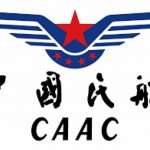EASA Proposes eVTOL Certification Means of Compliance
by Charles Alcock, May 26th 2020 AINonline
EASA has published proposed methods for certifying eVTOL aircraft in a further step towards establishing a framework for type certification. The “Proposed Means of Compliance with Special Condition VTOL” documentwas issued on May 25 and industry stakeholders have until July 24 to comment.
The agency described the proposals as the “third building block” in establishing rules for certifying both hybrid-electric and all-electric aircraft. It follows the publication of EASA’s special condition VTOL document in July 2019 and proposed certification requirements for propulsion systems, for which the consultation deadline has been extended until June 19.
Announcing the proposed methods for certification, EASA said that manufacturers need guidance on how to comply with requirements “now that the industry is moving from prototypes into more mature designs.” The proposals apply to “person-carrying small VTOL aircraft with three or more lift/thrust units used to generate powered lift and control.”
The means of compliance cover requirements such as the structural design envelope for eVTOL aircraft, flight load conditions, crashworthiness, capability after bird impact, design of fly-by-wire systems, the safety assessment process, lightning protection, and ratings for minimum handling qualities. These are based on input provided by companies in response to the special condition VTOL proposal.
EASA intends to publish further certification guidance materials during the 2020 EASA Rotorcraft and VTOL Symposium scheduled for November 10 to 12, 2020, as part of the new European Rotors trade show.
According to EASA, it has followed a similar approach to establishing a type certification framework for eVTOL aircraft as it did with the CS-23 Amendment 5 rules for light fixed-wing aircraft. The regulator’s intention is not to limit technical innovation by basing certification standards on “prescriptive design solutions,” but instead spelling out a means of compliance for the safety performance required in the special condition VTOL.
The new envisioned requirements for the eVTOL category cover aircraft of the same size and capacity as the existing CS-27 rules for small rotorcraft, with nine or fewer passenger seats and a maximum takeoff weight of 3,175 kg (7,000 pounds) or less. Under the special condition there will be requirements for two categories of operation, depending on the purpose of flights and the operating environment.
The enhanced category will apply for the protection of third parties in commercial flights over congested areas, as envisioned by the so-called on-demand taxi urban air mobility business model. This will cover factors such as requirements for continued safe flight and landing, including the possibility of having to divert from the planned destination.
The basic category would apply for private operations and in less congested airspace. Aircraft operating in this mode will have to be able to make a controlled emergency landing through means similar to a controlled glide for a fixed-wing aircraft or autorotation for a helicopter.




